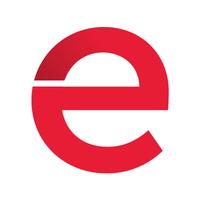From Stanford to Startup No.4 A Problem with Stealth Startups
How many people have heard of stealth startup, started a stealth startup, feel like they would go into entrepreneurship and keep their ideas to themselves? I'm going to assume that everyone's going to raise their hand, because we've all heard of the stealth startup, how cool it sounds. The problem with stealth startups is that you don't get the feedback you need quickly enough. In order to test whether you're working on the right thing or not, you need to put it in front of people. And I think there are certain verticals... I'm really talking about consumer internet here specifically... I think there are certain verticals outside of consumer internet where stealth might make sense if you're doing pharmaceutical or something. But for us, getting it in front of users was the most eye-opening experience. I remember putting Burbn in front of people we didn't know and they were just, 'What is this thing? What are you doing?' We would be in a busy bar and trying to explain to them on our mobile phones and they just wouldn't get it. And that happened enough in front of people outside of our friend group that it was really clear we had to work on something different. Or at least refine the idea. And I think that's something to keep in mind as you're going about starting a startup. Building the minimum viable product is super useful. Don't build past what you need to build to answer the questions. I think Eric Ries talks about this all the time. He says he was at his job and he was building this 3D chat client... the idea was you could basically link your Yahoo Messenger, your MSN Messenger, all these different messengers to this one 3D client... and he spent eight weeks doing it. And then they launched it. And no one used it. And he said to himself, 'Couldn't I have just done one of those platforms to prove that no one used it?' So ask yourself, how much work do you need to do to actually prove whether or not this thing's going to sink or swim? The 'Sink or Swim School of Engineering'. We should just write this book, right? It's really true, though. Everything we do at Instagram, we start by saying, what's the V1 of this feature? What's the V1 of this thing that we're going to put out in two days and test whether or not it's going to work? I think that's super important to remember. The last point here is failing early and failing often. It's totally OK to fail in an organization. You need to fail in order to find the right solution. Often, the first thing you start off with is not the thing you end up with. And you should assume from the start, your first idea is not going to be your last. And your job is to fail your way to success. And I think what's we did in Burbn pretty well. We failed all the time. And finally we woke up one morning and we were like, 'We're failing too much. We need to move a little bit to the right.' And even in Instagram, we failed a bunch with different features and things. But the idea is you're constantly refining this original idea. It's not this 'wake up one morning and have the brilliant idea and go implement it'. You're constantly iterating on it.

